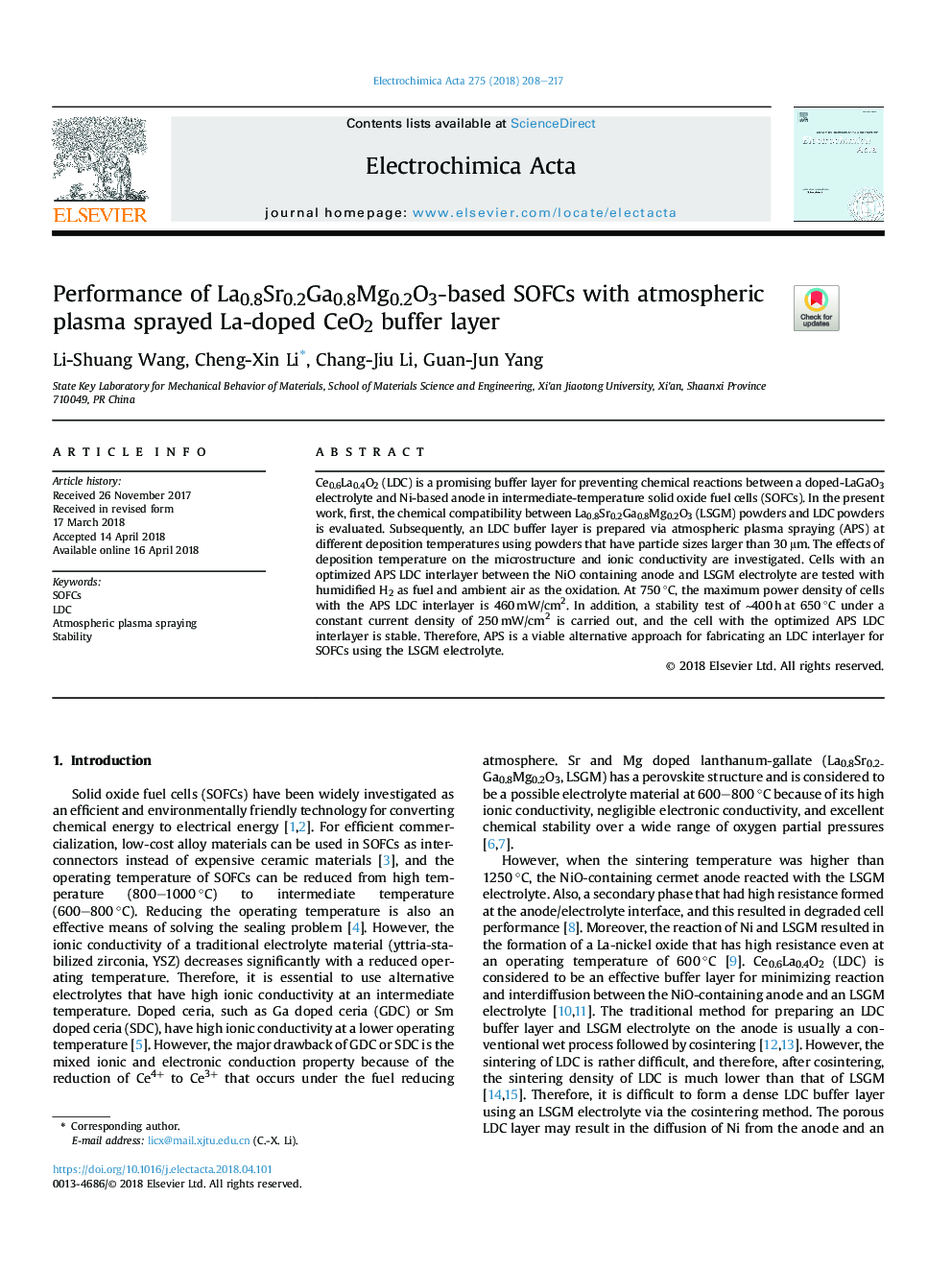| Article ID | Journal | Published Year | Pages | File Type |
|---|---|---|---|---|
| 6602932 | Electrochimica Acta | 2018 | 10 Pages |
Abstract
Ce0.6La0.4O2 (LDC) is a promising buffer layer for preventing chemical reactions between a doped-LaGaO3 electrolyte and Ni-based anode in intermediate-temperature solid oxide fuel cells (SOFCs). In the present work, first, the chemical compatibility between La0.8Sr0.2Ga0.8Mg0.2O3 (LSGM) powders and LDC powders is evaluated. Subsequently, an LDC buffer layer is prepared via atmospheric plasma spraying (APS) at different deposition temperatures using powders that have particle sizes larger than 30â¯Î¼m. The effects of deposition temperature on the microstructure and ionic conductivity are investigated. Cells with an optimized APS LDC interlayer between the NiO containing anode and LSGM electrolyte are tested with humidified H2 as fuel and ambient air as the oxidation. At 750â¯Â°C, the maximum power density of cells with the APS LDC interlayer is 460â¯mW/cm2. In addition, a stability test of â¼400â¯hâ¯at 650â¯Â°C under a constant current density of 250â¯mW/cm2 is carried out, and the cell with the optimized APS LDC interlayer is stable. Therefore, APS is a viable alternative approach for fabricating an LDC interlayer for SOFCs using the LSGM electrolyte.
Related Topics
Physical Sciences and Engineering
Chemical Engineering
Chemical Engineering (General)
Authors
Li-Shuang Wang, Cheng-Xin Li, Chang-Jiu Li, Guan-Jun Yang,
